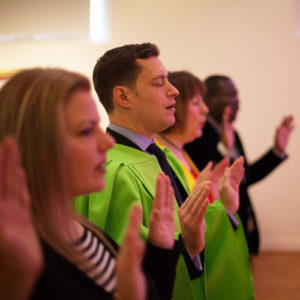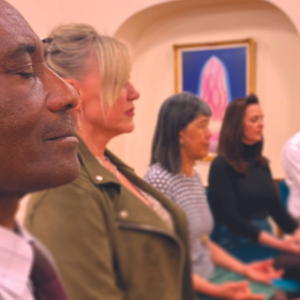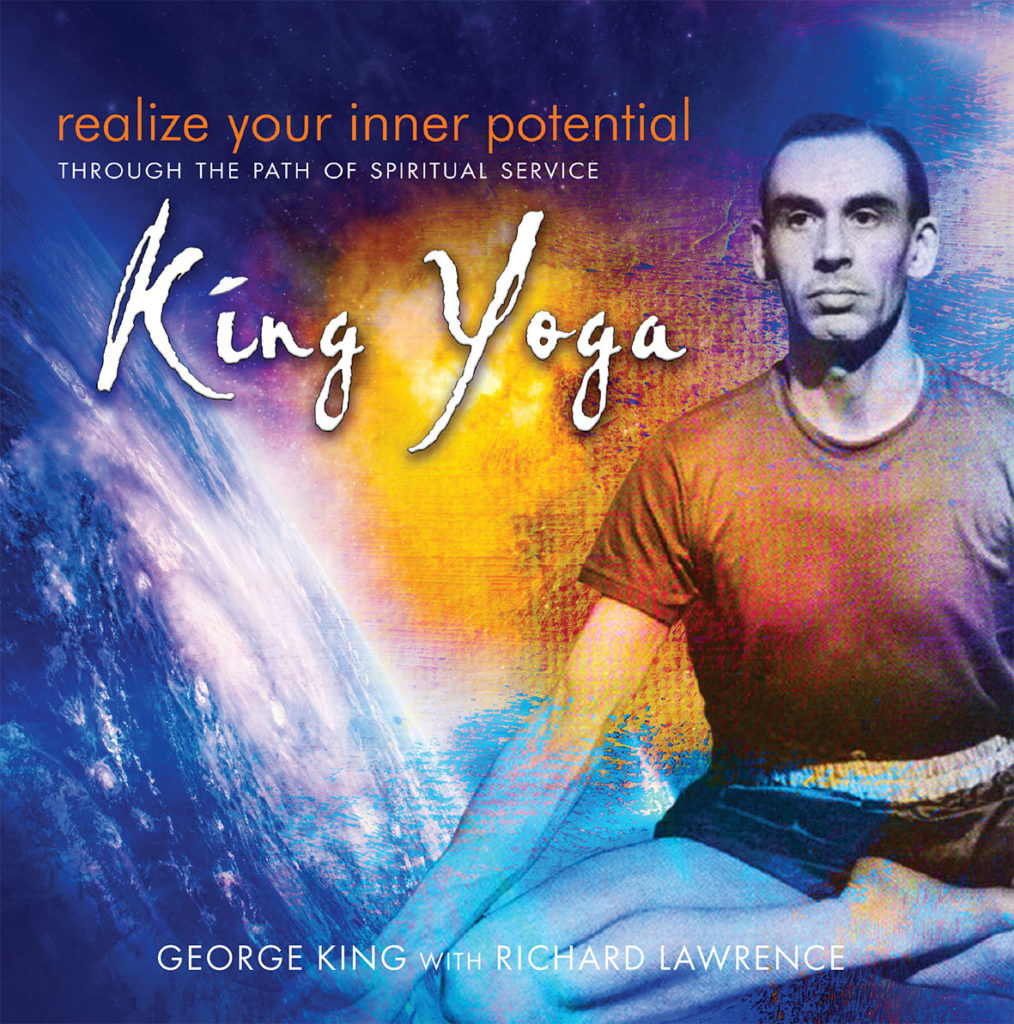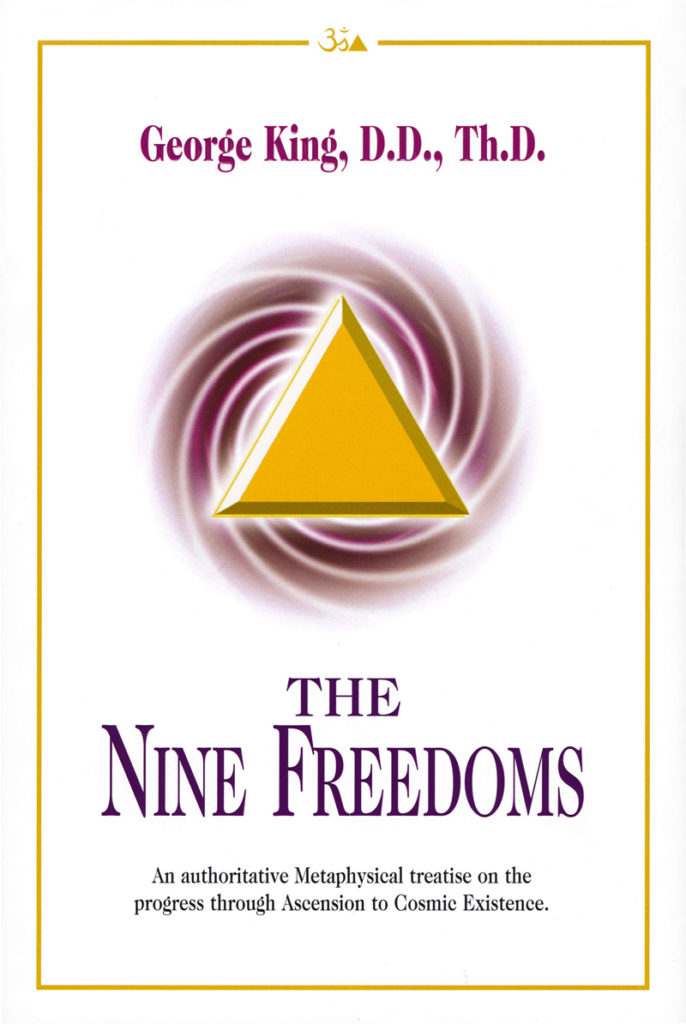17 DAYS OF SPIRITUAL WISDOM
Concentration, contemplation, meditation
From concentration to contemplation
Concentration is vital if we wish to make real progress in our spiritual development. Without it, we are very limited in what we can achieve. The next step up from concentration is – contemplation. In Realize Your Inner Potential, Dr. King gives a brilliant but very simple explanation of the difference between these two mental states:
Concentration is the result of directed thought. Whatever and whenever thought is directed down a certain channel – good or bad – that attitude of mind is then termed as concentration. Contemplation is something slightly different. It is a state of mind where, number one, the thought is controlled; but, number two, the thought is left open to receive. If you were to concentrate on a flatfish you would examine the fish very thoroughly, even count the fins, scales and so on. If you were to contemplate on the same fish you would leave your mind open to learn something about its environment, its physical function, its mental function and so on. The conscious mind is rather like a grasshopper. Immediately we sit down to concentrate on something in silence, our mind hops about hither and thither. If this happens to you, do not think for a moment that you are unique, or that you are a scatterbrain – it happens to everybody who tries it at first. You can get over it.
Some people think they can think about two things at the same time. An ordinary person cannot do this. He can think of one thing, then another thing and then back to the first thing and so on. If I see a flower and a tree at the same time, what I am doing is seeing the flower, then the tree and so on. It is happening so quickly that I believe I can concentrate on the flower and the tree at the same time. This is a tremendous dissipation of mental energy. Hence the absolute necessity to control mental energy either on the flower or the tree in order to get the benefit of knowing about the flower or knowing about the tree. There are many exercises which allow you to get some control of your conscious mind. One of the most potent is repetition, or, as some people refer to it, affirmation. A positive, well-balanced affirmation will help you to gain concentration, because while you are affirming something to yourself, silently or out loud, your conscious mind is not thinking so much of other things. Prayer is a type of affirmation. It is good for concentration. If you say a prayer, you are directing your mind down a certain channel. You are not thinking about your next-door neighbor’s new television set when you are saying a prayer. You are saying some words which mean something to you and which bring about a certain result.
Deep breathing exercises too give you an enhanced ability to concentrate. In fact, the first thing you notice when you do deep breathing exercises is the mental reaction you get. You notice it far quicker than any physical reaction. The mental reaction is almost immediate. The physical reaction – better health, glowing skin, enhanced magnetism – comes later. Contemplation, if you are doing breathing exercises for instance, would make you aware of exactly what is happening to you. Not only would you concentrate on guiding the breath and prana, but you would learn what is taking place within you as you do it. It is a much deeper state than concentration.
You might choose to concentrate and contemplate on an artistic drawing – one of Turner’s skies, for instance. First of all, you concentrate on that particular picture and you notice the blending of the colors, the workmanship and draftsmanship that went into the formulation of Turner’s idea of a sunset. In the next stage, contemplation, you would go much deeper and look not only into that picture, but deep into the heart and mind of the artist who had drawn that picture, using the picture as your focal point. Contemplation is that state of consciousness which brings you clairvoyant power. It must, because the basis of contemplation is a clairvoyant perception, a kind of spiritual intuition. You would not only know about that picture, but you would know about the person who painted it. If you contemplated a bit further, you would not only know about the person who painted it but you would know about the canvas it was painted on, the brushes it was painted with, and even the atomic structure of the pigments of the paint that was used. That is taking contemplation as far as you can take contemplation.
In Sanskrit yoga writings, concentration is termed dharana, and contemplation – dhyana.
Meditation – samadhi
Meditation, in the strictest sense of the word, is the next step after contemplation – and is known as samadhi in Sanskrit. Dr. King explains this elevated state in Realize Your Inner Potential as follows:
Meditation is that state in which he who contemplates becomes one with that upon which he contemplates. It is a state which is contacted almost always in a very deep trance state.
And later in the same book, he continues:
You may pick up a particular object, like a holy book. You already know through your concentration all the information in it. Through your contemplation you already know even the atomic structure from which the book is made. But meditation will take you very much further than even this, to virtually abstract realms.
You will know why the author saw fit to write that book when he did; what spiritual significance it has to mankind; why it was written at the time it was, and so on. You would come back out of meditation and say “I know about that.” You would return as a knower, rather than a person who said, “This is my opinion.” You can then honestly, before man and God say, in a humble, gentle manner, “I know this to be so.” You would not argue about it; you may not even be prepared to discuss it, but you would indeed know it to be so.
In The Nine Freedoms Dr. King explains meditation as the result of a raise of the mystical power of kundalini, and actually describes in graphic detail what it feels like when this power rises through each of the chakras. This is a truly unique account and is strongly recommended to all students of the higher forms of yoga – whatever their spiritual path may be.
Different meanings of the word “meditation”
The word “meditation” means different things to different people. To Dr. King, especially in the earlier years of the Society’s history, this word referred exclusively to an extremely elevated state which takes years – if not lives – to attain. Later, Dr. King sometimes used this word in a context more akin to contemplation (dhyana), as explained above. It is also worth noting that in some yoga books the word dhyana is translated as “meditation” rather than “contemplation”.
Meditation in the sense of calming the mind, as it is commonly thought of today, is a state which actually precedes concentration – and is therefore a world away from meditation in the sense of samadhi. This is sometimes known as “watching the mind”, or “watchfulness”, and is highly beneficial – in fact it is essential if we are to make serious progress in yoga.
Anyone seeking to better manage stress in their lives, and gain greater clarity and spiritual perception, is strongly recommended to take up yoga breathing which is a natural and very effective way to find a greater degree of peace amidst the clatter of modern daily life.







